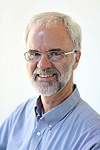Ground Level
- Home
- Features
- from the Blog
- The Archive
- About Ground Level
For years, rural residents have wrung their hands about the loss of young people heading for the big city. University of Minnesota Extension research points to a more nuanced trend that is also identifiable in some places — the movement of people in their 30s and 40s from urban to rural areas.
Jobs can be difficult to find and transportation is an issue, but proximity to the outdoors, an improved environment for children, a sense of safety and a simpler pace of life draw some.
Ground Level Topics
'Brain Gain' :
People in 30s, 40s making the rural choice
The movement of people in their 30s and 40s into some rural areas that otherwise have declining populations has continued in recent years, a new University of Minnesota Extension study shows.
Your Stories: From urban to rural
We're gathering videos from people who have moved back to rural parts of Minnesota after leaving for school or work, or who have moved to rural Minnesota for the first time as adults.
from the Ground Level Blog
Coming home, more native than her parents
![]() After two years at Bard College, Stearns County native Marna Macgregor is coming home. Her guest post for the Ground Level blog explores the mixed feelings she has about coming home.
After two years at Bard College, Stearns County native Marna Macgregor is coming home. Her guest post for the Ground Level blog explores the mixed feelings she has about coming home.
Why move to rural Minnesota?
![]() University of Minnesota Extension research shows people in their 30s and 40s continue to move to rural areas otherwise experiencing population declines. So we asked members of Public Insight Network to explain why.
University of Minnesota Extension research shows people in their 30s and 40s continue to move to rural areas otherwise experiencing population declines. So we asked members of Public Insight Network to explain why.
Behind the "brain gain:" moving to a small town has its ups and downs
![]() People who move to rural Minnesota from the city rave about the beauty and personal freedom, but the jobs picture proves more problematic.
People who move to rural Minnesota from the city rave about the beauty and personal freedom, but the jobs picture proves more problematic.

Experience from the Community
We're gathering stories from people who have moved back to rural parts of Minnesota after leaving for school or work, or who have moved to rural Minnesota for the first time as adults. Thanks so much for your contributions.
by Jennifer Vogel, edited by Michael Olson, MPR News

Ground Level Discussions
Outstate Minnesota Transit
Ground Level Blog Archive
Ground Level launched in early 2010 focusing on a wide variety of topics, from the growing complexity of Minnesota's local food system to cities preparing for new fiscal realities, from exurban growth in Baldwin Township to the quest to expand broadband access across the state. The Ground Level Blog chronicles the wide variety of topics with over 500

Ground Level: a Minnesota Public Radio News project examining community issues across Minnesota
We identify topics that are significant and complex and that play out uniquely at the local level. We want to explore those issues in which people taking action in their communities make a difference and can serve as guides for others.
Ground Level launched in early 2010 and shines a light on a variety of topics, from the growing complexity of Minnesota's local food system to cities preparing for new fiscal realities, from exurban growth in Baldwin Township to the quest to expand broadband access across the state.
We experiment with coverage on a variety of platforms. This includes text, audio and video online, of course - the Ground Level blog, a series of topics pages and social networking, for example. It also includes on-air coverage, public forums both virtual and real-world and collaboration with community-based media.
Our audience consists of Minnesotans interested in community life, particularly those who are taking an active part in it or helping others do the same.
Ground Level is very much an experiment -- in finding ways to learn about and tell stories, in working with other organizations, in walking up to the line between providing insight and advocating specific actions. Our goal is to inform and give people the ability and incentive to engage with their community. We invite your feedback and your ideas, via the blog, twitter at @MPRGroundLevel, phone calls, emails, whatever. Join us.
About the team:

Dave Peters
Dave Peters directs MPR's project on community journalism, looking for ways Minnesota residents are making their towns, cities and neighborhoods better places to live. He joined MPR News in 2009 after more than 30 years as a newspaper and online reporter and editor. Contact Dave

In The Spotlight
-
The Current Music Blog
Your daily note for good music, news and pop culture. With attempted jokes.
Support for Ground Level is provided
by the Bush Foundation.



